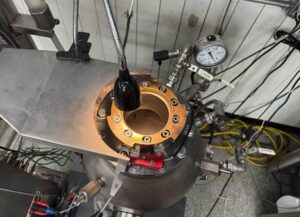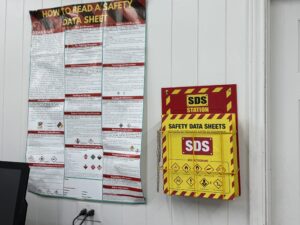Introduction
The NFPA (National Fire Protection Association) has long set multiple standards that govern how facilities handle and manage combustible dust, requiring compliance with both fundamental and industry-specific regulations. To simplify compliance and improve safety, NFPA has consolidated these standards into a single document—NFPA 660, Standard for Combustible Dusts and Particulate Solids.
Effective December 6, 2024, NFPA 660 merges NFPA 652 (the fundamentals standard) with five industry-specific standards, thereby creating a more streamlined and structured approach for businesses handling combustible dust. In this blog, we’ll first break down how the new standard is organized and navigated. Then, we’ll highlight the key changes and compliance requirements. Finally, we’ll share insights on how industries can start preparing for the transition.
Why Was NFPA 660 Created?
Prior to NFPA 660, organizations managing combustible dust hazards needed to comply with NFPA 652 alongside industry-specific standards like NFPA 61 (Agricultural and Food Processing), NFPA 484 (Combustible Metals), NFPA 654 (General Combustible Particulate Solids), NFPA 655 (Sulfur Fires and Explosions), and NFPA 664 (Wood Processing and Woodworking Facilities).
This dual compliance approach often led to confusion, redundancy, and inefficiencies. Recognizing this, NFPA initiated the consolidation process in March 2020, culminating in NFPA 660, which unifies all combustible dust safety requirements into a single document. This revision allows industries to adhere to a singular, comprehensive standard rather than navigating multiple, overlapping guidelines.
The new standard promotes:
- Consistency: Reducing contradictions and redundancies across various industries.
- Efficiency: Simplifying regulatory compliance for businesses.
- Clarity: Providing a clear framework for hazard identification and mitigation.
- Enhanced Safety: Ensuring better risk management strategies across different combustible dust environments.
How NFPA 660 is Organized
The new standard is structured to enhance clarity and usability. It consists of three major sections:
- Fundamentals Chapters (1-10) – Core principles applicable to all industries handling combustible dust.
- Industry-Specific Chapters (21-25) – Sector-specific requirements for agriculture, metals, sulfur, wood processing, and other combustible dusts.
- Annexes (A-Z) – Non-mandatory but informative guidance for implementation and compliance, including example scenarios and best practices.
Additionally, NFPA 660 introduces improved cross-referencing between sections to facilitate easier navigation, ensuring that users can quickly locate relevant information.
Navigating NFPA 660
One of the best ways to familiarize yourself with the new standard is to start with the Origins section. This section outlines why NFPA 660 was developed, key changes, and how to determine requirements for specific facilities. The Administration (Chapter 1) further defines the scope, purpose, and application of the standard.
For detailed explanations of terms or additional guidance, users should refer to Annex A, which supplements the code with explanatory material, examples, and diagrams. This section is particularly useful for organizations new to combustible dust compliance.
Key Changes in NFPA 660
Although NFPA 660 consolidates existing standards, it also introduces several key changes to enhance consistency and clarity. These changes fall into four categories: simplifications, additions, modifications, and clarifications.
Simplifications:
- Standardized definitions and terminology in Chapter 3.
- Consistent terminology for deflagration vents and sulfur size reduction machinery.
- Consolidated fundamental requirements into Chapters 1-10 to eliminate redundancies.
- Streamlined industry-specific requirements in Chapters 21-25.
New Additions:
- Requirements for operational readiness.
- Evaluation of reactivity hazards such as self-heating, thermal instability, and water reactivity.
- Defined qualifications for conducting a Dust Hazard Analysis (DHA).
- Updated requirements for flame-resistant garments.
- Enhanced guidelines for silo fire response and spark detection systems.
- New requirements for design and maintenance of explosion protection systems.
- Expansion of maintenance and inspection protocols to improve hazard monitoring.
Modifications to Existing Standards:
- One key update includes changes to combustible metals processing requirements.
- Additionally, new criteria have been introduced for flexible connectors in agricultural and food processing.
- Another important change is the revision of DHA requirements for existing facilities.
- Furthermore, the guidance on recycling AMS exhaust in occupied buildings has been improved.
- Finally, there is an expanded focus on housekeeping and dust control measures.
Clarifications:
- Detailed test standards for portable vacuum cleaners used with combustible metals.
- Updated guidelines for dust collection duct manifolding.
- Thermal dose calculations for flash fire and compartment deflagration scenarios.
- Clearer criteria for safe handling of fine particulates.
How to Ensure Compliance with NFPA 660
To align with NFPA 660, facility owners and operators should follow a structured approach to hazard management:
Identify and Characterize Combustible Dust Hazards:
- Conduct material testing to determine combustibility/explosibility.
- Assess reactivity hazards and mitigate risks accordingly.
Perform a Dust Hazard Analysis (DHA):
- Identify risk areas and required controls.
- Ensure the DHA is conducted by a qualified individual.
- Update DHAs every five years or when process changes occur.
Implement a Dust Management Program:
- First, train employees and contractors on hazard awareness and safe practices.
- Next, maintain housekeeping procedures to limit dust accumulation.
- In addition, control ignition sources and electrostatic discharge.
- Ensure proper bonding and grounding of equipment to reduce static hazards.
- To further reduce risk, protect facilities and equipment with fire suppression and explosion mitigation systems.
- Finally, conduct routine inspections to verify compliance with the latest guidelines.
Address New Compliance Requirements:
- Integrate operational readiness reviews into management systems.
- Verify compliance with updated DHA, spark detection, and fire response plans.
- Ensure flame-resistant garments and PPE meet new standards.
- Confirm AMS exhaust recycling meets exposure limit guidelines.
- Establish detailed documentation protocols to track compliance efforts.
Conclusion
NFPA 660 represents a major step forward in simplifying and enhancing combustible dust safety regulations. By consolidating multiple standards into a single document, it provides greater clarity, improves hazard management, and aligns industry best practices.
While the fundamental principles of combustible dust safety remain unchanged, facility managers must familiarize themselves with the new structure and added requirements to maintain compliance. If your facility was previously compliant with NFPA 652 and industry-specific standards, only minor adjustments may be necessary to meet NFPA 660.
For a more in-depth understanding, access the full NFPA 660 standard via NFPA Link and consult industry professionals for guidance on implementation.
By proactively adapting to these changes, organizations can ensure safer operations while meeting regulatory expectations for combustible dust hazard management. Staying ahead of compliance ensures not only regulatory adherence but also a safer workplace for employees and stakeholders alike.















